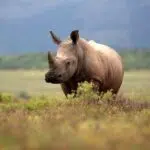Sea Otter Awareness Week is celebrated annually in the last week of September. This year, it is observed from September 22 to 28. Otters may be popular for their cuteness, but they serve a much bigger role in our ecosystem. No matter how endearing their look floating on their back and rubbing their tiny faces, otters are not as at peace as they seem. This holiday was created to educate the community about the importance of maintaining and protecting the sea otter population. It’s important to become aware of the many challenges humans cause to sea otters. Conservation organizations are working hard to lower sea otter mortality, but you can play a significant role as well.
History of Sea Otter Awareness Week
Sea Otter Awareness Week celebrates a small and underrated creature. Otters have been around centuries before us. They date back to the Miocene age, roughly five to 23 million years ago. If you look beyond their cuteness, you’ll see an animal essential for our survival. Otters are keystone species that have a significant role to serve. They create a balance in the ecosystem by controlling the sea urchin population. This is especially essential as sea urchins overfeed on kelp and have destroyed much coastal kelp. Maintaining kelp forests reduces the effects of climate change, reducing carbon dioxide.
The International Fur Seal Treaty of 1911 saved sea otters from extinction by banning the hunting of sea otters and other keystone species, though their population continues to fluctuate throughout the years. In 1977, sea otters were littered in the Endangered Species Act, but conservation groups, such as the Defenders of Wildlife (founded 1947), played a great role in the recovery process. In 2006, Defenders of Wildlife aided in establishing the California Sea Otter Fund, allowing taxpayers to donate to the cause.
Sea otters have since recovered due to the advocacy of wildlife conservation groups and government intervention, but the effects of overhunting sea otters are still felt. Sea otters continue to face challenges. Their main threats are man-made: oil spills, fishing gear entailment, vessel strikes, and habitat degradation due to pollution and global warming.
Sea Otter Awareness Week timeline
The North Pacific Seal Convention of 1911 is a treaty that bans killing fur seals and sea otters in the North Pacific Ocean.
The non-profit conservation organization Defenders of Wildlife is founded, aiming to protect all North American wildlife.
Sea Otters are listed in the Endangered Species Act.
Defenders of Wildlife advocates for the establishment of the Sea Otter Recovery Fund, which allows taxpayers to donate to help recover the sea otter population.
Sea Otter Awareness Week FAQs
Why do otters rub their faces?
Otters have the densest fur of all animals. Rubbing their fur keeps them clean, thus retaining its waterproof quality.
Are otters friendly?
Otters are not friendly toward other species. Don’t let their sweet exterior fool you. They are apex predators and will attack when necessary. So long as you keep your distance from them — and most importantly, their pups — you avoid coming into contact with those sharp teeth.
What’s the lifespan of an otter?
Otters typically live from 10 to 15 years. However, otters in zoological parks can live up to twenty years.
Can otters be kept as pets?
Otters may be adorable to look at, but they don’t make good pets. They suffer greatly when confined and become aggressive. They require a large body of water and socialization with other otters. It is also illegal to own a pet otter in most countries, including the U.S.
Sea Otter Awareness Week Activities
Add to your family
The best way to help the sea otter population is to adopt one. Defenders of Wildlife allows you to sponsor the adorable creatures, helping them live and prosper. Won’t you sleep a little better knowing you’re helping an otter in need of a good life?
Host Events
Host school events for children and their parents to learn more about these beautiful creatures. Some aquariums offer live feeds of their wildlife. Nothing like watching otters float about to raise awareness!
Donate
No donation is too small. Sea otters are essential animals — they fight climate change just by existing.
5 Adorable Facts About Sea Otters
Otters eat 25% of their body weight
Otters may look small and dainty, but they consume a lot of food — about three times as much as the average person.
Otters use their whiskers to hunt
The otter’s whiskers help it locate movements in the water to hunt prey.
Otters have pockets
The loose skin under their armpits functions as a pocket to help them carry food they find back to the surface.
Otters use tools
They use rocks as hammers to help break open hard-shelled prey, like clams.
They cover themselves in kelp or seaweed
Sea otters will and do cover themselves in kelp or seaweed to keep from floating away from each other and to protect themselves against predators.
Why We Love Sea Otter Awareness Week
It matters
Sea Otters are a keystone species and our survival is contingent on theirs. Sea otters maintain biodiversity in our ecosystem and help us fight climate change.
We can learn more
The world around us is so fascinating and learning about these adorable creatures and how they affect our ecosystem is enriching. Education raises awareness of these important matters and how we can contribute.
Cuteness overload
Part of educating the public about the importance of otters is looking at the plentiful images of this peaceful-looking animal and its pups. Nothing inspires change more!
Sea Otter Awareness Week dates
| Year | Date | Day |
|---|---|---|
| 2022 | September 18 | Sunday |
| 2023 | September 24 | Sunday |
| 2024 | September 22 | Sunday |
| 2025 | September 21 | Sunday |
| 2026 | September 20 | Sunday |

























